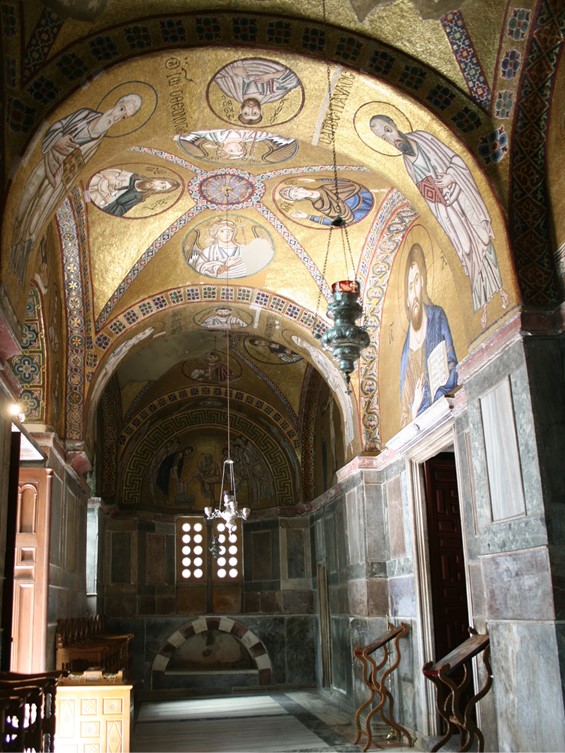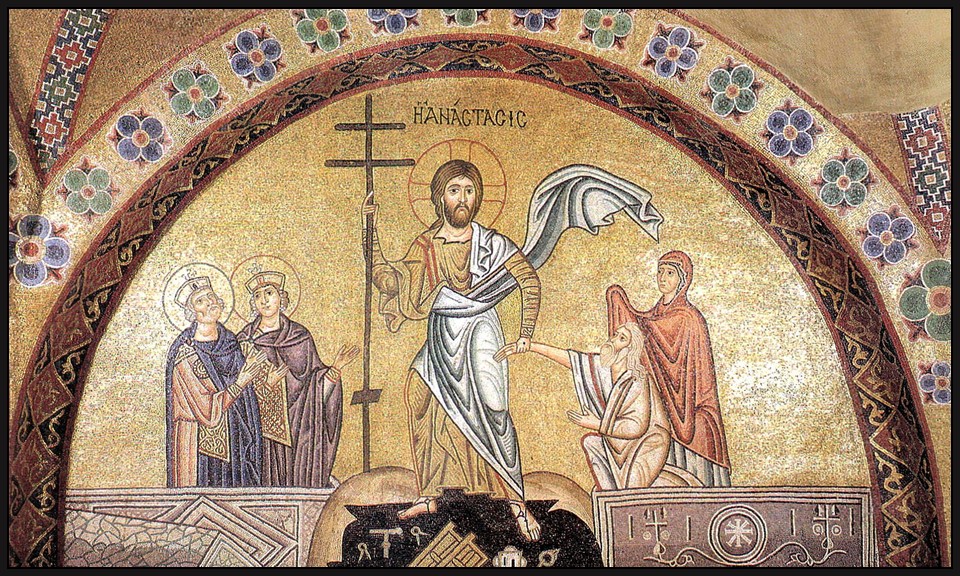
“For I delivered unto you first of all that which I also received, how that Christ died for our sins according to the Scriptures; and that He was buried, and that He rose again the third day according to the Scriptures; and that He was seen of Cephas, then of the twelve; after that, He was seen of above five thousand brethren at once.” 1 Cor. 15:3-6… The culmination for the Holy Week in the Orthodox Church comes with Anastasis! Happy Easter and… Rejoyce!https://www.goarch.org/-/holy-week-in-the-eastern-orthodox-church
This year’s Anastasis scene comes from the Narthex of the Katholikon Church in the Monastery of Hosios Loukas near the town of Distomo, in Boeotia, Greece. Along with the mid-11th century Nea Moni (“New Monastery”) on the island of Chios and the late-11th century Monastic Church at Daphni, in Attica, the visitor of these three Monasteries, will get an informative glimpse of monumental architecture and mosaic-work in Byzantium of the Macedonian Dynasty. A glimpse that is impressive and awe-inspiring.
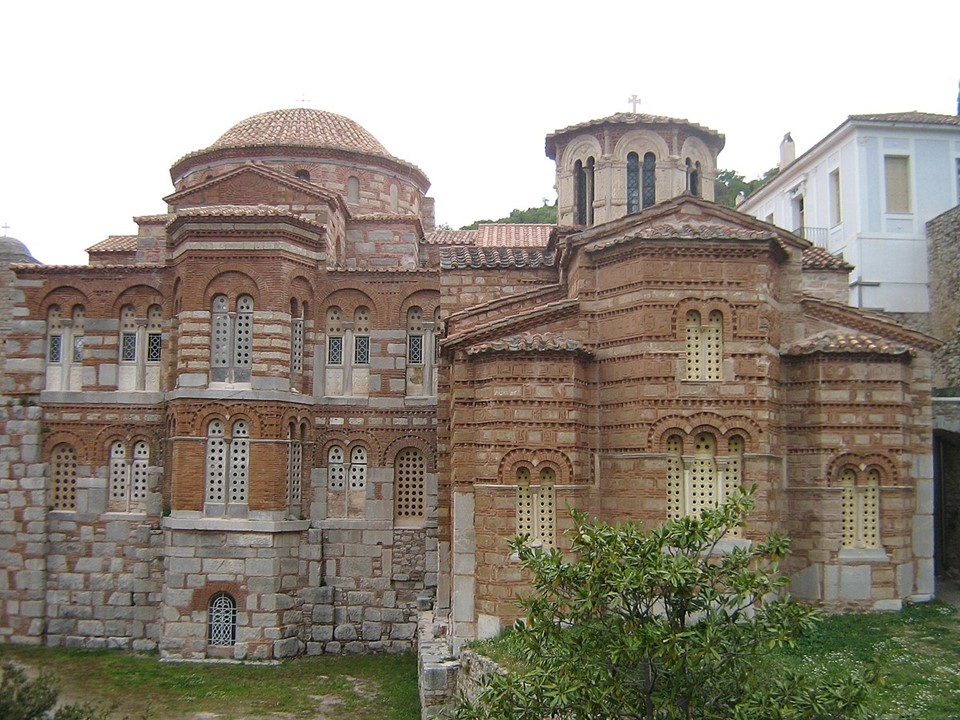
The location where the Monastery of Hosios Loukas was founded, is perfect… the slopes of Mount Helicon, a scenic valley and an olive grove. The founding father, Luke of Steiris… was respected and much loved by the local population. Retaining its authenticity, still, a vibrant Monastic Community with spiritual vigour, the Monastery of Hosios Loukas shows us today, how perceptive the 11th century Byzantines were!
The pilgrim/caller to the Monastery of Hosios Loukas is expected to visit three Churches, all of them unique in their own right.
Built under the great domed Katholiko Church, the Burial Crypt is decorated with remarkably well-preserved frescoes painted shortly after 1048 AD. Little damaged, with the exception of the apse, the iconographic programme of the Crypt is complete… an almost perfect example of how the interior of a Byzantine Church of the 11th century should be adorned.
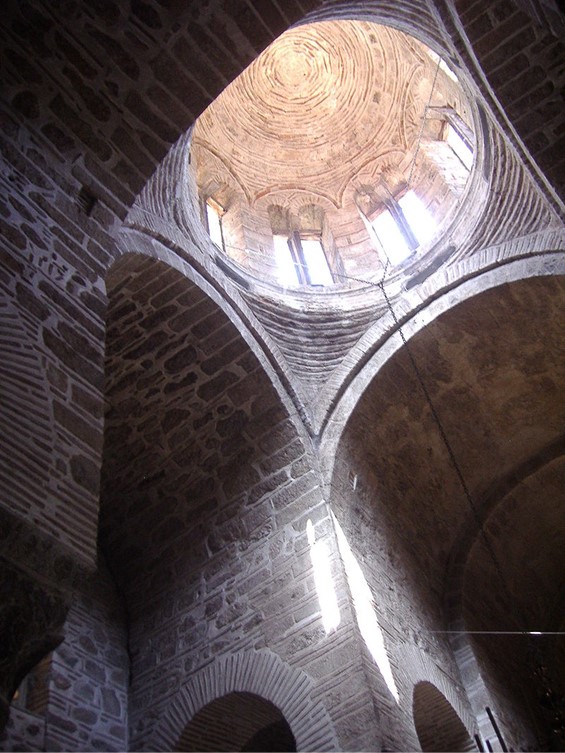
During the second half of the 10th century, the monastic community of Hosios Loukas built a remarkable Church, dedicating it to the Theotokos. Less visited by tourists, this is a place for serene contemplation. It is considered a masterpiece of Byzantine architecture, featuring the cross-in-square type architectural plan, similar to that of the Lips Monastery in Constantinople. Very little interior decoration survives but the beauty of the Church’s masonry is astounding. The cloisonne-style masonry is made of brick, stone or marble and curious pseudo-Kufic patterns are intricately displayed. Whenever I visit the Monastery of Hosios Loukas this is where I spent most of my time!
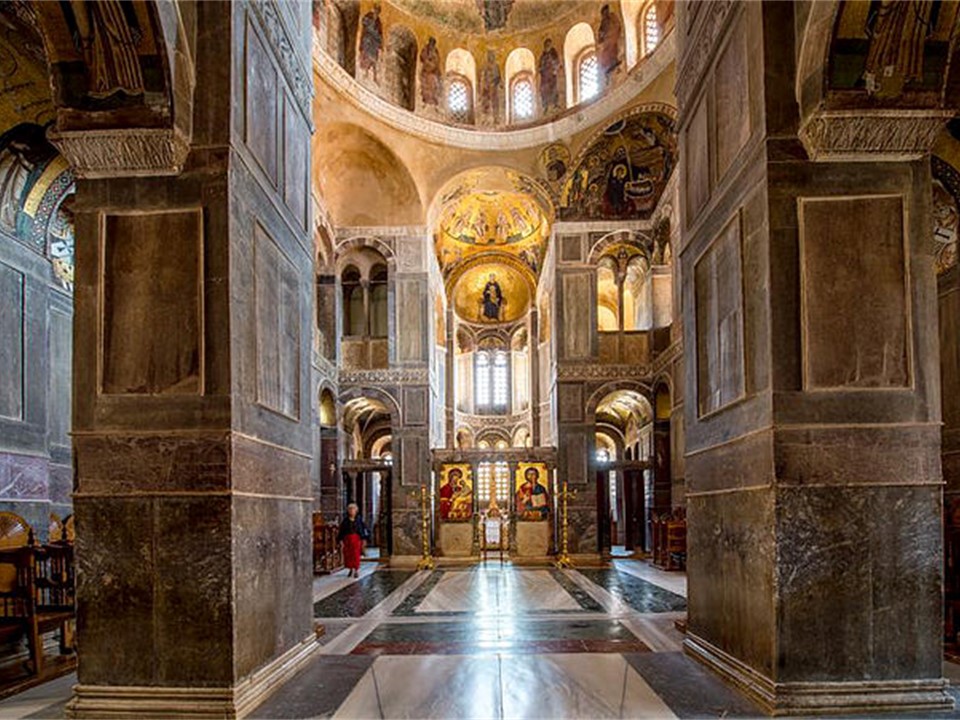
https://gallerybyzantium.com/unlocking-the-secrets-of-hosios-loukas/
The 11th century Katholiko Church of the Monastery, impressive and imposing, stands next to the church of the Theotokos. Its purpose was to house the relic of St. Luke, which is “…said to have exuded Myron, a sort of perfumed oil which produced healing miracles.” This newer church, dedicated to St. Luke, is of the octagonal cross-in-square architectural type, with coloured marble panels on the walls and mosaics on the surfaces above them. The result is a unique, rich and luminous interior. Standing in the middle of the Katholikon Church is a unique experience to “feel.” https://www.thebyzantinelegacy.com/hosios-loukas and https://gallerybyzantium.com/unlocking-the-secrets-of-hosios-loukas/
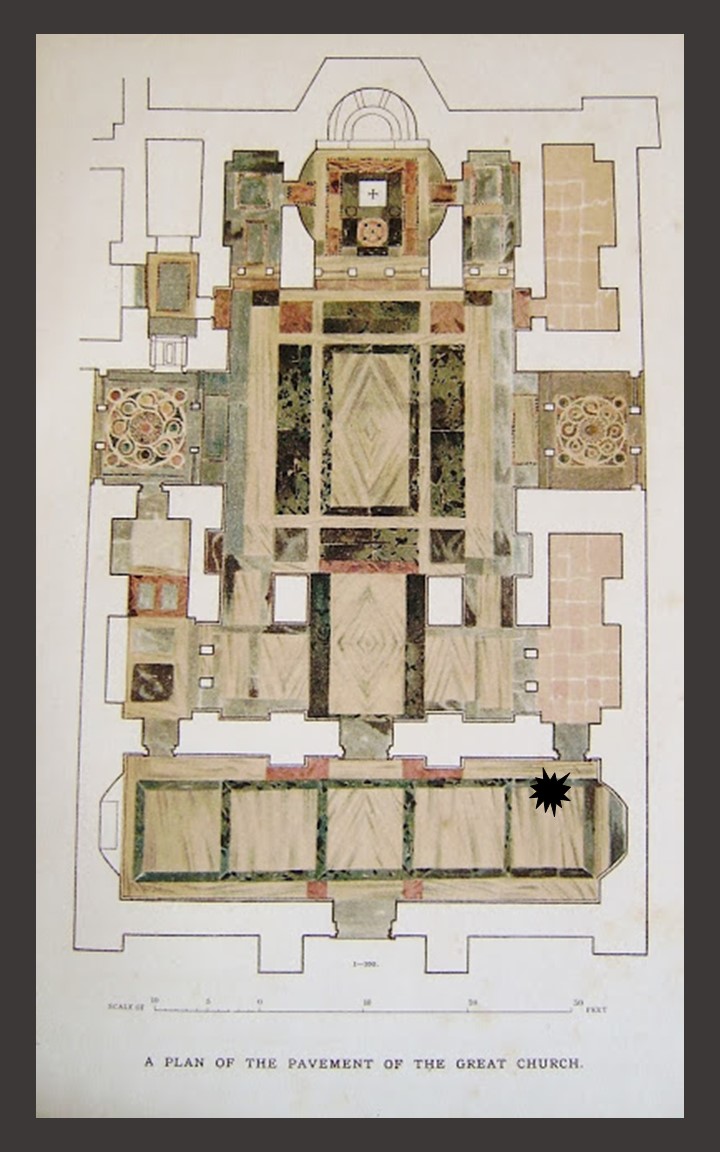
The amazing mosaic of the Anastasis in the Narthex area of the Katholikon Church of Hosios Loukas is a fine example of the early 11th-century style in Byzantine Art. It depicts the Resurrection of Christ, or in true Byzantine style, the Descent of Christ into Hades, according to the occult gospel of Nicodemus. Christ is depicted in the centre of the composition, unobstructed and enveloped by golden light, stepping at the gates of Hades and lifting Adam from within an open sarcophagus. Behind Adam is Eve and on the opposite side Biblical kings like Solomon and David. This is a mosaic of outstanding artistic quality, the product of a workshop whose practice goes back to Hellenistic times, stark and austere in essence but monumental, direct and highly spiritual.
Some Considerations on the Eleventh-Century Byzantine Wall Mosaics of Hosios Loukas and San Nicolò di Lido is an interesting article by Irina Andreescu-Treadgold to read. aninterestinghttps://www.academia.edu/7926757/Some_Considerations_on_the_Eleventh_Century_Byzantine_Wall_Mosaics_of_Hosios_Loukas_and_San_Nicol%C3%B2_di_Lido?email_work_card=view-paper
For a Student Activity please… Check HERE!
